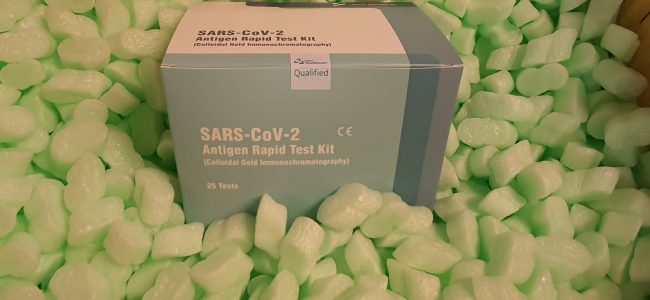The SLC26A4 gene has been described because the second gene concerned in most circumstances of autosomal recessive non-syndromic hearing loss (ARNSHL), after GJB2. Over 500 completely different SLC26A4 mutations have been reported, with every ethnic inhabitants having its personal distinctive mutations.
Here, we aimed to find out the frequency and mutation profile of the SLC26A4 gene from two completely different provinces (middle and west) of Iran. This research included 50 nuclear households with two or extra siblings segregating presumed ARNSHL. All affected examined destructive for mutations in GJB2 on the DFNB1 locus and had been due to this fact screened for autozygosity by descent utilizing brief tandem repeat polymorphisms (STRPs) of DFNB4.
Sanger sequencing was carried out to display screen the 20 exons of the SLC26A4 gene for the households linked to this locus. In silico analyses had been additionally carried out utilizing accessible software program instruments. Four out of 25 (16%) and three of 25 (12%) studied households of Isfahan and Hamedan provinces, respectively. had been linked to DFNB4.
Sanger sequencing led to the identification of six completely different mutations, one of which (c.919-2A>G) was recurrent and accounted for 31% of all mutant alleles. One out of 7 (14.3%) households with mutations had been confirmed to be Pendred syndrome (PS). The SLC26A4 mutations have a excessive carrying charge in ARNSHL Iranian patients. The identification of a illness inflicting mutation can be utilized to determine a genotypic diagnosis and supply essential data to the patients and their households.
Prior work in late-onset Alzheimer’s illness (LOAD) has resulted in discrepant findings as as to whether latest consanguinity and outbred autozygosity are related to LOAD danger. In the present research, we examined the affiliation between consanguinity and outbred autozygosity with LOAD in the biggest such evaluation to this point, in which 20 LOAD GWAS datasets had been retrieved by means of public databases.
Our analyses had been restricted to eight distinct ethnic teams: African-Caribbean, Ashkenazi-Jewish European, European-Caribbean, French-Canadian, Finnish European, North-Western European, South-Eastern European, and Yoruba African for a complete of 21,492 unrelated topics (11,196 LOAD and 10,296 controls). Recent consanguinity willpower was carried out utilizing FSuite v1.0.3, in line with topics’ ancestral background. The stage of autozygosity in the outbred inhabitants was assessed by calculating inbreeding estimates based mostly on the proportion (FROH) and the quantity (NROH) of runs of homozygosity (ROHs).
Characterization of Autozygosity in Pigs in Three-Way Crossbreeding
Crossbreeding in livestock can be utilized to extend genetic range. The ensuing improve in variability is said to the heterozygosity of the crossbred animal. The evolution of range throughout crossbreeding may be assessed utilizing genomic knowledge. The goal of this research was to explain patterns of runs of homozygosity (ROH) in animals ensuing from three-way crossbreeding, from parental pure traces, and in their crossbred offspring.
The crossbreeding scheme consisted of a first crossbreeding Pietrain boars and Large White sows, after which the offspring of the Pietrain × Large White had been crossed with Duroc boars. The offspring of the second crossbreeding are known as G0, the offspring of G0 boars and G0 sows are known as G1. All the animals had been genotyped utilizing the Illumina SNP60 porcine chip.
After filtering, analyses had been carried out with 2,336 animals and 48,579 autosomal single nucleotide polymorphism (SNP). The imply ROH-based inbreeding coefficients had been proven to be 0.27 ± 0.05, 0.23 ± 0.04, and 0.26 ± 0.04 for Duroc, Large White, and Pietrain, respectively. ROH had been detected in the Pietrain × Large White crossbred however the homozygous segments had been fewer and smaller than in their dad and mom.
Similar outcomes had been obtained in the G0 crossbred. However, in the G1 crossbreds the quantity and the dimensions of ROH had been greater than in G0 dad and mom. Similar ROH hotspots had been detected on SSC1, SSC4, SSC7, SSC9, SSC13, SSC14, and SSC15 in each G0 and G1 animals. Long ROH (>16 Mb) had been noticed in G1 animals, suggesting areas with low recombination charges.
The conservation of these homozygous segments in the three crossbred populations implies that some haplotypes had been shared between parental breeds. Gene annotation in ROH hotspots in G0 animals recognized genes associated to manufacturing traits together with carcass composition and replica. These findings advance our understanding of methods to handle genetic range in crossbred populations.
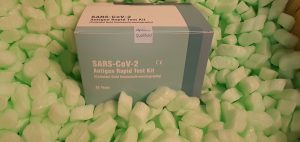
Runs of homozygosity present a genome panorama image of inbreeding and genetic historical past of European autochthonous and industrial pig breeds
ROHs are lengthy stretches of DNA homozygous at every polymorphic place. The proportion of genome lined by ROHs and their size are indicators of the extent and origin of inbreeding. Frequent frequent ROHs throughout the identical inhabitants outline ROH islands and point out hotspots of choice.
In this work, we investigated ROHs in a complete of 1131 pigs from 20 European native pig breeds and in three cosmopolitan breeds, genotyped with the GGP Porcine HD Genomic Profiler. plink software program was used to establish ROHs. Size lessons and genomic inbreeding parameters had been evaluated. ROH islands had been outlined by evaluating completely different thresholds of homozygous SNP frequency. A purposeful overview of breed-specific ROH islands was obtained through over-representation analyses of GO organic processes
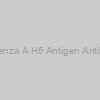 Influenza A H5 Antigen Antibody |
|
GWB-878EF4 |
GenWay Biotech |
0.2 mg |
Ask for price |
 Influenza A H5 Antigen Antibody |
|
GWB-7F0D69 |
GenWay Biotech |
0.2 mg |
Ask for price |
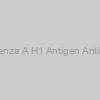 Influenza A H1 Antigen Antibody |
|
GWB-B76E93 |
GenWay Biotech |
0.1 mg |
Ask for price |
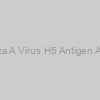 Influenza A Virus H5 Antigen Antibody |
|
abx414452-02mg |
Abbexa |
0.2 mg |
EUR 678 |
|
|
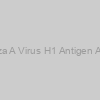 Influenza A Virus H1 Antigen Antibody |
|
abx415739-01mg |
Abbexa |
0.1 mg |
EUR 861.6 |
|
|
 Influenza A Virus H5 Antigen Antibody |
|
abx414452-200l |
Abbexa |
200 µl |
EUR 487.5 |
 Influenza A Virus H1 Antigen Antibody |
|
abx415739-200l |
Abbexa |
200 µl |
EUR 650 |
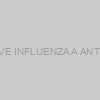 NATIVE INFLUENZA A ANTIGEN |
|
GWB-1779A2 |
GenWay Biotech |
1 ml |
Ask for price |
|
|
 Antigen) Influenza A (H1N1) Antigen |
|
11-553 |
ProSci |
1 mL |
EUR 645 |
|
Description: Influenza A, Influenza A (H1N1) |
 Antigen) Influenza A (H3N2) Antigen |
|
11-554 |
ProSci |
1 mL |
EUR 645 |
|
Description: Influenza A Antigen Strain TX, Influenza A Antigen Strain Texas |
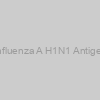 Influenza A H1N1 Antigen |
|
abx670268-1ml |
Abbexa |
1 ml |
EUR 627.6 |
|
|
 Influenza A H1N1 Antigen |
|
abx670268-100g |
Abbexa |
100 µg |
EUR 437.5 |
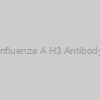 Influenza A H3 Antibody |
|
abx021977-1mg |
Abbexa |
1 mg |
EUR 1053.6 |
|
|
 Influenza A H3 Antibody |
|
abx021978-1mg |
Abbexa |
1 mg |
EUR 1053.6 |
|
|
 Influenza A H3 Antibody |
|
abx021977-400l |
Abbexa |
400 µl |
Ask for price |
 Influenza A H3 Antibody |
|
abx021977-80l |
Abbexa |
80 µl |
EUR 975 |
 Influenza A H3 Antibody |
|
abx021978-400l |
Abbexa |
400 µl |
Ask for price |
 Influenza A H3 Antibody |
|
abx021978-80l |
Abbexa |
80 µl |
EUR 975 |
) Influenza A Virus Nucleoprotein Antibody (HL1089) |
|
MAB12483-100 |
The Native Antigen Company |
0.1 |
EUR 529.44 |
|
Description: Anti-influenza A virus nucleoprotein monoclonal antibody, made in rabbit. |
) Influenza A Virus Nucleoprotein Antibody (HL1089) |
|
MAB12483-500 |
The Native Antigen Company |
0.5 |
EUR 2261.91 |
|
Description: Anti-influenza A virus nucleoprotein monoclonal antibody, made in rabbit. |
) Influenza A Virus Nucleoprotein Antibody (HL1103) |
|
MAB12484-100 |
The Native Antigen Company |
0.1 |
EUR 529.44 |
|
Description: Anti-influenza A virus nucleoprotein monoclonal antibody, made in rabbit. |
) Influenza A Virus Nucleoprotein Antibody (HL1103) |
|
MAB12484-500 |
The Native Antigen Company |
0.5 |
EUR 2261.91 |
|
Description: Anti-influenza A virus nucleoprotein monoclonal antibody, made in rabbit. |
) Influenza A Virus Nucleoprotein Antibody (HL1078) |
|
MAB12485-100 |
The Native Antigen Company |
0.1 |
EUR 529.44 |
|
Description: Anti-influenza A virus nucleoprotein monoclonal antibody, made in rabbit. |
) Influenza A Virus Nucleoprotein Antibody (HL1078) |
|
MAB12485-500 |
The Native Antigen Company |
0.5 |
EUR 2261.91 |
|
Description: Anti-influenza A virus nucleoprotein monoclonal antibody, made in rabbit. |
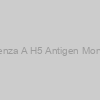 Mouse Anti Influenza A H5 Antigen Monoclonal Antibody |
|
DMABT-51386MI |
Creative Diagnostics |
0.2 mg |
EUR 795.6 |
 Mouse Anti Influenza A H5 Antigen Monoclonal Antibody |
|
DMABT-51388MI |
Creative Diagnostics |
0.2 mg |
EUR 889.2 |
) Influenza A Virus Antigen (H5N1) |
|
VAng-Lsx011-1mL |
Creative Biolabs |
1 mL |
EUR 883.2 |
|
Description: Natural antigen of Influenza A virus subtype H5N1. |
 Antigen Liquid) Influenza A (H1N1) Antigen Liquid |
|
IFLUAH1N1ALR1ML |
Innovative research |
each |
EUR 771 |
|
|
|
Description: Influenza A (H1N1) Antigen Liquid |
 Antigen Liquid) Influenza A (H3N2) Antigen Liquid |
|
IFLUAH3N2ALR1ML |
Innovative research |
each |
EUR 754 |
|
|
|
Description: Influenza A (H3N2) Antigen Liquid |
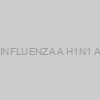 NATIVE INFLUENZA A H1N1 ANTIGEN |
|
GWB-B63944 |
GenWay Biotech |
1 ml |
Ask for price |
 Antigen Protein) Influenza A (H3N2) Antigen Protein |
|
abx061421-1ml |
Abbexa |
1 ml |
EUR 718.8 |
|
|
 Antigen Protein) Influenza A (H3N2) Antigen Protein |
|
abx061421-100g |
Abbexa |
100 µg |
Ask for price |
 Antigen Protein) Influenza A (H3N2) Antigen Protein |
|
abx061421-10g |
Abbexa |
10 µg |
EUR 862.5 |
 Antigen Protein) Influenza A (H3N2) Antigen Protein |
|
abx061421-50g |
Abbexa |
50 µg |
Ask for price |
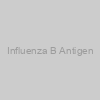 Influenza B Antigen |
|
abx670262-1ml |
Abbexa |
1 ml |
EUR 510 |
|
|
 Influenza B Antigen |
|
abx670262-100g |
Abbexa |
100 µg |
EUR 337.5 |
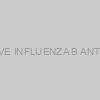 NATIVE INFLUENZA B ANTIGEN |
|
GWB-E9EC80 |
GenWay Biotech |
1 ml |
Ask for price |
) Influenza B Virus Nucleoprotein Antibody (HL1068) |
|
MAB12480-100 |
The Native Antigen Company |
0.1 |
EUR 529.44 |
|
Description: Anti-influenza B virus nucleoprotein monoclonal antibody, made in rabbit. |
) Influenza B Virus Nucleoprotein Antibody (HL1068) |
|
MAB12480-500 |
The Native Antigen Company |
0.5 |
EUR 2261.91 |
|
Description: Anti-influenza B virus nucleoprotein monoclonal antibody, made in rabbit. |
) Influenza B Virus Nucleoprotein Antibody (HL1069) |
|
MAB12481-100 |
The Native Antigen Company |
0.1 |
EUR 529.44 |
|
Description: Anti-influenza B virus nucleoprotein monoclonal antibody, made in rabbit. |
) Influenza B Virus Nucleoprotein Antibody (HL1069) |
|
MAB12481-500 |
The Native Antigen Company |
0.5 |
EUR 2261.91 |
|
Description: Anti-influenza B virus nucleoprotein monoclonal antibody, made in rabbit. |
) Influenza B Virus Nucleoprotein Antibody (HL1073) |
|
MAB12482-100 |
The Native Antigen Company |
0.1 |
EUR 529.44 |
|
Description: Anti-influenza B virus nucleoprotein monoclonal antibody, made in rabbit. |
) Influenza B Virus Nucleoprotein Antibody (HL1073) |
|
MAB12482-500 |
The Native Antigen Company |
0.5 |
EUR 2261.91 |
|
Description: Anti-influenza B virus nucleoprotein monoclonal antibody, made in rabbit. |
 Antigen) Influenza A Strain A/Kiev/301/94 (H3N2) Antigen |
|
11-568 |
ProSci |
0.1 mg |
EUR 632.4 |
|
Description: Influenza A (A/Kiev/301/94) (H3N2), Influenza Virus Type A (H3N2), Strain A/Kiev/301/94 |
 Antigen) Influenza A Strain A/Panama/2007/99 (H3N2) Antigen |
|
11-570 |
ProSci |
0.05 mg |
EUR 632.4 |
|
Description: Influenza A (A/Panama/2007/99) (H3N2), Influenza Virus Type A (H3N2), Strain A/Panama/2007/99 |
 Antigen) Influenza A Strain A/Beijing/262/95 (H1N1) Antigen |
|
11-566 |
ProSci |
0.1 mg |
EUR 632.4 |
|
Description: Influenza A (A/Beijing/262/95), Influenza Virus, Type A (H1N1), Strain A/Beijing/262/95 |
 Antigen) Influenza A Strain A/Brisbane/10/07 (H3N2) Antigen |
|
11-567 |
ProSci |
0.1 mg |
EUR 632.4 |
|
Description: Influenza A (A/Brisbane/10/07), Influenza A Virus, Strain A/Brisbane/10/07 (H3N2) |
 Recombinant Avian influenza Antigen |
|
E41H050 |
EnoGene |
100ug |
EUR 395 |
 Antigen) Influenza A Strain A/Shangdong/9/93 (H3N2) Antigen |
|
11-571 |
ProSci |
0.1 mg |
EUR 632.4 |
|
Description: Influenza A (A/Shangdong/9/93) (H3N2), Influenza Virus, Type A, Strain A/Shangdong/9/93, (H3N2) |
 Antigen) Influenza A Strain A/Wisconsin/67/05 (H3N2) Antigen |
|
11-573 |
ProSci |
0.1 mg |
EUR 632.4 |
|
Description: Influenza A (A/Wisconsin), Influenza A Virus, Strain A/Wisconsin/67/05 (H3N2) |
 Antigen Liquid) Influenza A Strain A/Kiev/301/94 (H3N2) Antigen Liquid |
|
IFLUAKV30194H3N2ALR100UG |
Innovative research |
each |
EUR 738 |
|
|
|
Description: Influenza A Strain A/Kiev/301/94 (H3N2) Antigen Liquid |
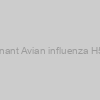 Recombinant Avian influenza H5 Antigen |
|
E41H045 |
EnoGene |
100ug |
EUR 395 |
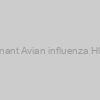 Recombinant Avian influenza H9 Antigen |
|
E41H046 |
EnoGene |
100ug |
EUR 395 |
 Antigen Liquid) Influenza A Strain A/Panama/2007/99 (H3N2) Antigen Liquid |
|
IFLUAPNA200799H3N2ALR50UG |
Innovative research |
each |
EUR 738 |
|
|
|
Description: Influenza A Strain A/Panama/2007/99 (H3N2) Antigen Liquid |
 Antigen Liquid) Influenza A Strain A/Beijing/262/95 (H1N1) Antigen Liquid |
|
IFLUABJ26295H1N1ALR100UG |
Innovative research |
each |
EUR 738 |
|
|
|
Description: Influenza A Strain A/Beijing/262/95 (H1N1) Antigen Liquid |
] Viral Lysate) Influenza A [A/Brisbane/59/2007 (H1N1)] Viral Lysate |
|
NAT41628-100 |
The Native Antigen Company |
0.1 |
EUR 512.85 |
|
Description: Influenza virus is propagated in the MDCK cell line. Virus is purified using sucrose density gradient ultracentrifugation, disrupted in the presence of 0.5% Triton X-100 non-ionic detergent/0.6 M KCl, and heat inactivated. |
 Antigen) Influenza A Strain A/Solomon Islands/03/06 (H1N1) Antigen |
|
11-572 |
ProSci |
0.1 mg |
EUR 632.4 |
|
Description: Influenza A (A/Solomon Island), Influenza A Strain A/Solomon Islands/03/06 (H1N1) |
 Antigen Liquid) Influenza A Strain A/Brisbane/10/07 (H3N2) Antigen Liquid |
|
IFLUABN1007H3N2ALR100UG |
Innovative research |
each |
EUR 738 |
|
|
|
Description: Influenza A Strain A/Brisbane/10/07 (H3N2) Antigen Liquid |
 Antigen Liquid) Influenza A Strain A/Shangdong/9/93 (H3N2) Antigen Liquid |
|
IFLUASHDG993H3N2ALR100UG |
Innovative research |
each |
EUR 738 |
|
|
|
Description: Influenza A Strain A/Shangdong/9/93 (H3N2) Antigen Liquid |
 Antigen Liquid) Influenza A Strain A/Wisconsin/67/05 (H3N2) Antigen Liquid |
|
IFLUAWI6705H3N2ALR100UG |
Innovative research |
each |
EUR 738 |
|
|
|
Description: Influenza A Strain A/Wisconsin/67/05 (H3N2) Antigen Liquid |
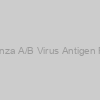 Human Influenza A/B Virus Antigen Rapid Test Kit |
|
abx090713-100l |
Abbexa |
100 µl |
EUR 650 |
 Human Influenza A/B Virus Antigen Rapid Test Kit |
|
abx090713-1ml |
Abbexa |
1 ml |
EUR 10500 |
 Human Influenza A/B Virus Antigen Rapid Test Kit |
|
abx090713-200l |
Abbexa |
200 µl |
EUR 2100 |
] Viral Lysate) Influenza A [A/Hong Kong/8/1968 (H3N2)] Viral Lysate |
|
NAT41641-100 |
The Native Antigen Company |
0.1 |
EUR 523.06 |
|
Description: Influenza virus is propagated in the MDCK cell line. Virus is purified using sucrose density gradient ultracentrifugation, disrupted in the presence of 0.5% Triton X-100 non-ionic detergent/0.6 M KCl, and heat inactivated. |
] Viral Lysate) Influenza A [A/Hong Kong/8/1968 (H3N2)] Viral Lysate |
|
NAT41641-500 |
The Native Antigen Company |
0.5 |
EUR 2181.53 |
|
Description: Influenza virus is propagated in the MDCK cell line. Virus is purified using sucrose density gradient ultracentrifugation, disrupted in the presence of 0.5% Triton X-100 non-ionic detergent/0.6 M KCl, and heat inactivated. |
] Viral Lysate) Influenza A [A/California/07/2009 (H1N1pdm)] Viral Lysate |
|
NAT41634-100 |
The Native Antigen Company |
0.1 |
EUR 512.85 |
|
Description: Influenza A H1N1 Pandemic 2009 (H1N1pdm) virus is propagated in the MDCK cell line. Virus is purified using sucrose density gradient ultracentrifugation, disrupted in the presence of 0.5% Triton X-100 non-ionic detergent/0.6 M KCl, and heat inactivated. |
] Viral Lysate) Influenza A [A/California/07/2009 (H1N1pdm)] Viral Lysate |
|
NAT41634-500 |
The Native Antigen Company |
0.5 |
EUR 2181.53 |
|
Description: Influenza A H1N1 Pandemic 2009 (H1N1pdm) virus is propagated in the MDCK cell line. Virus is purified using sucrose density gradient ultracentrifugation, disrupted in the presence of 0.5% Triton X-100 non-ionic detergent/0.6 M KCl, and heat inactivated. |
] Viral Lysate) Influenza A [A/New Caledonia/20/1999 (H1N1)] Viral Lysate |
|
NAT41629-100 |
The Native Antigen Company |
0.1 |
EUR 512.85 |
|
Description: Influenza virus is propagated in the MDCK cell line. Virus is purified using sucrose density gradient ultracentrifugation, disrupted in the presence of 0.5% Triton X-100 non-ionic detergent/0.6 M KCl, and heat inactivated. |
] Viral Lysate) Influenza A [A/New Caledonia/20/1999 (H1N1)] Viral Lysate |
|
NAT41629-500 |
The Native Antigen Company |
0.5 |
EUR 2181.53 |
|
Description: Influenza virus is propagated in the MDCK cell line. Virus is purified using sucrose density gradient ultracentrifugation, disrupted in the presence of 0.5% Triton X-100 non-ionic detergent/0.6 M KCl, and heat inactivated. |
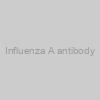 Influenza A antibody |
|
10-1096 |
Fitzgerald |
500 ug |
EUR 165 |
|
|
|
Description: Mouse monoclonal Influenza A antibody |
 Influenza A antibody |
|
10-1097 |
Fitzgerald |
1 mg |
EUR 295 |
|
|
|
Description: Mouse monoclonal Influenza A antibody |
 Influenza A antibody |
|
10-1098 |
Fitzgerald |
1 mg |
EUR 532 |
|
|
|
Description: Mouse monoclonal Influenza A antibody |
 Influenza A antibody |
|
10-1099 |
Fitzgerald |
1 mg |
EUR 532 |
|
|
|
Description: Mouse monoclonal Influenza A antibody |
 Influenza A antibody |
|
10-1101 |
Fitzgerald |
1 mg |
EUR 532 |
|
|
|
Description: Mouse monoclonal Influenza A antibody |
 Influenza A antibody |
|
10-1102 |
Fitzgerald |
500 ug |
EUR 295 |
|
|
|
Description: Mouse monoclonal Influenza A antibody |
 Influenza A antibody |
|
10-1103 |
Fitzgerald |
500 ug |
EUR 295 |
|
|
|
Description: Mouse monoclonal Influenza A antibody |
 Influenza A antibody |
|
10-1241 |
Fitzgerald |
500 ug |
EUR 149 |
|
|
|
Description: Mouse monoclonal Influenza A antibody |
 Influenza A antibody |
|
10-1243 |
Fitzgerald |
500 ug |
EUR 149 |
|
|
|
Description: Mouse monoclonal Influenza A antibody |
 Influenza A antibody |
|
10-7866 |
Fitzgerald |
1 mg |
EUR 345 |
|
|
|
Description: Mouse monoclonal Influenza A antibody |
 Influenza A antibody |
|
10-7867 |
Fitzgerald |
1 mg |
EUR 345 |
|
|
|
Description: Mouse monoclonal Influenza A antibody |
 Influenza A antibody |
|
10-I50A |
Fitzgerald |
1 mg |
EUR 150 |
|
|
|
Description: Mouse monoclonal Influenza A antibody |
 Influenza A antibody |
|
10-I50B |
Fitzgerald |
1 mg |
EUR 335 |
|
|
|
Description: Mouse monoclonal Influenza A antibody |
 Influenza A antibody |
|
10-I50C |
Fitzgerald |
1 mg |
EUR 603 |
|
|
|
Description: Mouse monoclonal Influenza A antibody |
 Influenza A antibody |
|
10-I50D |
Fitzgerald |
1 mg |
EUR 231 |
|
|
|
Description: Mouse monoclonal Influenza A antibody |
 Influenza A antibody |
|
10-I50E |
Fitzgerald |
1 mg |
EUR 231 |
|
|
|
Description: Mouse monoclonal Influenza A antibody |
 Influenza A antibody |
|
10-I50F |
Fitzgerald |
1 mg |
EUR 225 |
|
|
|
Description: Mouse monoclonal Influenza A antibody |
 Influenza A antibody |
|
10-I50G |
Fitzgerald |
1 mg |
EUR 425 |
|
|
|
Description: Mouse monoclonal Influenza A antibody |
 Influenza A antibody |
|
10-I50H |
Fitzgerald |
1 mg |
EUR 425 |
|
|
|
Description: Mouse monoclonal Influenza A antibody |
 Influenza A antibody |
|
10-I50I |
Fitzgerald |
1 mg |
EUR 425 |
|
|
|
Description: Mouse monoclonal Influenza A antibody |
 Influenza A antibody |
|
10-I50K |
Fitzgerald |
1 mg |
EUR 225 |
|
|
|
Description: Mouse monoclonal Influenza A antibody |
 Influenza A antibody |
|
10-I50L |
Fitzgerald |
1 mg |
EUR 250 |
|
|
|
Description: Mouse monoclonal Influenza A antibody |
 Influenza A antibody |
|
10-I50M |
Fitzgerald |
1 mg |
EUR 250 |
|
|
|
Description: Mouse monoclonal Influenza A antibody |
 Influenza A antibody |
|
10-I50N |
Fitzgerald |
1 mg |
EUR 250 |
|
|
|
Description: Mouse monoclonal Influenza A antibody |
 Influenza A antibody |
|
10-I50O |
Fitzgerald |
1 mg |
EUR 250 |
|
|
|
Description: Mouse monoclonal Influenza A antibody |
 Influenza A antibody |
|
10-I50P |
Fitzgerald |
1 mg |
EUR 250 |
|
|
|
Description: Mouse monoclonal Influenza A antibody |
 Influenza A antibody |
|
10-I50Q |
Fitzgerald |
1 mg |
EUR 225 |
|
|
|
Description: Mouse monoclonal Influenza A antibody |
 Influenza A antibody |
|
10-I50R |
Fitzgerald |
1 mg |
EUR 225 |
|
|
|
Description: Mouse monoclonal Influenza A antibody |
 Influenza A antibody |
|
10-I50S |
Fitzgerald |
1 mg |
EUR 225 |
|
|
|
Description: Mouse monoclonal Influenza A antibody |
 Influenza A antibody |
|
10-I50T |
Fitzgerald |
1 mg |
EUR 225 |
|
|
|
Description: Mouse monoclonal Influenza A antibody |
 Influenza A antibody |
|
10-I50U |
Fitzgerald |
1 mg |
EUR 225 |
|
|
|
Description: Mouse monoclonal Influenza A antibody |
 Influenza A antibody |
|
10-1100 |
Fitzgerald |
500 ug |
EUR 295 |
|
|
|
Description: Mouse monoclonal Influenza A antibody |
 Influenza A antibody |
|
10R-I131a |
Fitzgerald |
1 mg |
EUR 413 |
|
|
|
Description: Mouse monoclonal Influenza A antibody |
 Influenza A antibody |
|
10R-I131b |
Fitzgerald |
1 mg |
EUR 425 |
|
|
|
Description: Mouse monoclonal Influenza A antibody |
 Influenza A antibody |
|
10C-CR1306M1 |
Fitzgerald |
100 ug |
EUR 425 |
|
|
|
Description: Mouse monoclonal Influenza A antibody |
 Influenza A antibody |
|
10C-CR1306M2 |
Fitzgerald |
100 ug |
EUR 95 |
|
|
|
Description: Mouse monoclonal Influenza A antibody |
 Influenza A antibody |
|
70R-IR080 |
Fitzgerald |
100 ug |
EUR 295 |
|
|
|
Description: Affinity purified Rabbit polyclonal Influenza A antibody |
 Influenza A antibody |
|
70R-IR082 |
Fitzgerald |
100 ug |
EUR 280 |
|
|
|
Description: Affinity purified Rabbit polyclonal Influenza A antibody |
.
Mora Romagnola and Turopolje breeds had the biggest proportions of genome lined with ROH (~1003 and ~955 Mb respectively), whereas Nero Siciliano and Sarda breeds had the bottom proportions (~207 and 247 Mb respectively). The highest proportion of lengthy ROH (>16 Mb) was in Apulo-Calabrese, Mora Romagnola and Casertana. The largest quantity of ROH islands was recognized in the Italian Landrace (n = 32), Cinta Senese (n = 26) and Lithuanian White Old Type (n = 22) breeds.
Several ROH islands had been in areas encompassing genes identified to have an effect on morphological traits. Comparative ROH construction evaluation amongst breeds indicated the same genetic construction of native breeds throughout Europe. This research contributed to understanding of the genetic historical past of the investigated pig breeds and supplied data to handle these pig genetic assets.
